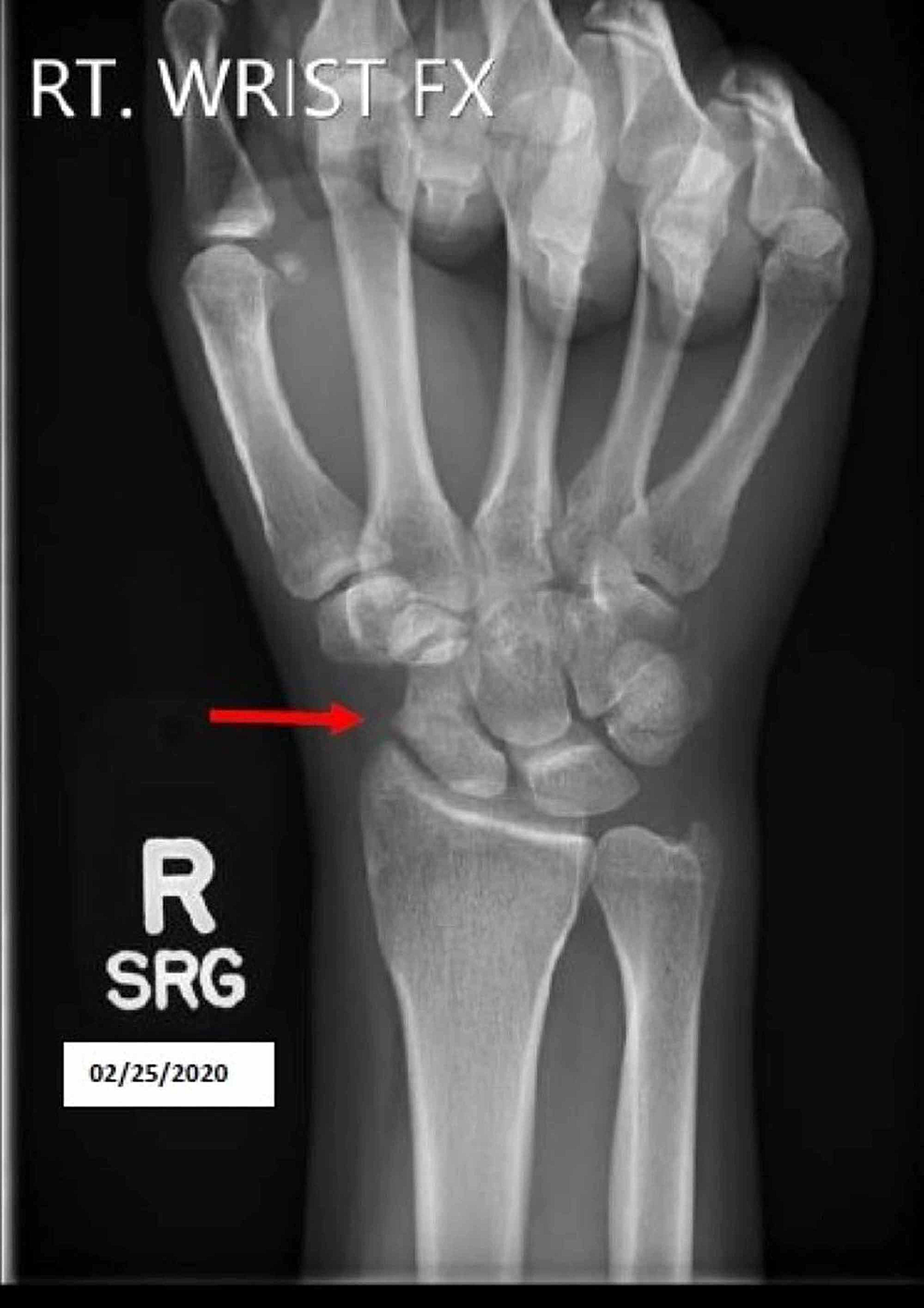

time between the injury and treatment: the longer the time, the more likely nonunion is. alignment of the fractured bones: whether the bone ends moved out of position (displaced fracture) or are still aligned (nondisplaced fracture). What is the treatment for a scaphoid fracture? A bone scan can also be used but it’s not as widely available as the other tests. If your doctor sees a fracture but can’t tell if the bones are aligned correctly or needs further information, a CT scan or MRI can help your doctor determine the proper treatment. If your doctor has a high suspicion of a fracture, they may do a CT scan. By that time, a fracture has begun to heal and is more noticeable. If a fracture isn’t seen, but your doctor still suspects you have one, your wrist will be immobilized with a thumb splint until repeat X-rays are taken 10 to 14 days later. However, up to 25 percent of scaphoid fractures aren’t seen on an X-ray right after the injury. Avascular necrosis can also cause nonunion. About 5 percent of scaphoid fractures are nonunion. This is called nonunion, and it can cause serious long-term complications. When not treated with immobilization right away, the fracture may fail to heal. For these reasons, many people think it’s just a sprained wrist and delay getting appropriate treatment. The pain may even improve in the days and weeks after the fracture. There’s frequently no noticeable deformity or swelling, so it doesn’t look fractured. It may get worse with pinching and gripping. The most common symptom is pain and tenderness over the anatomic snuffbox. Scaphoid fractures often aren’t always obvious and can be hard to diagnose. Other causes include a hard blow directly to your palm and motor vehicle accidents. Participating in sports that repeatedly stress your scaphoid bone, such as shot put or gymnastics, can also cause a scaphoid fracture. Wearing a wrist guard is an easy way to prevent these injuries. The force puts a huge amount of stress on this small bone, which can cause a fracture.įOOSH injuries occur in many sports, especially things like skiing, skating, and snowboarding. When you fall on your hand, all of the energy produced when your hand hits the ground travels to your forearm through the scaphoid. When your wrist is less extended, the radius bone takes the force of impact resulting in a distal radius fracture ( Colles’ or Smith fracture).Ī FOOSH injury commonly affects the scaphoid because it’s the main connection between your hand and forearm. The farther your wrist is bent back, the more likely it is that your scaphoid bone will break. 
The angle of your wrist when it hits the ground affects where a fracture happens. When it causes your wrist to bend back farther than it’s meant to go, a fracture may occur.
#Scaphoid pain but no fracture full#
This protects your face, head, and back from injury, but it means your wrist and arm take the full force of the impact. When you sense you are about to fall, you instinctively react by cocking your wrist and extending your arm to try to break the fall with your hand. FOOSH stands for “fall onto an outstretched hand.” It’s the mechanism behind many upper limb fractures.






 0 kommentar(er)
0 kommentar(er)
